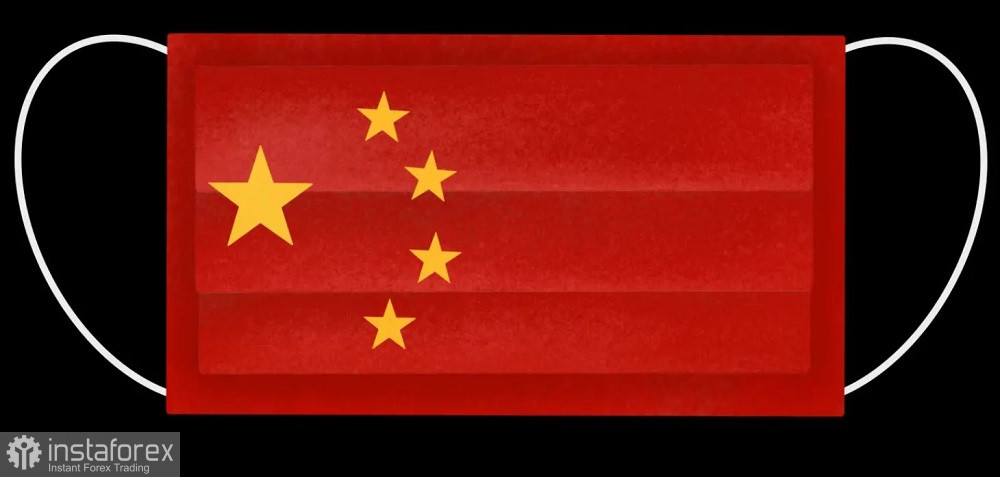The New Year period in the foreign exchange market is characterized by two opposite states: either a flat, or abnormal volatility. The past week has shown that a kind of "market fuse" has come to naught. The market is moving more by momentum, after the high-profile events of mid-December. Ahead is the pre-holiday week, which is traditionally characterized by low liquidity and sluggishness. Nevertheless, keep in mind that the "thin" market is particularly sensitive, so abnormal price fluctuations shouldn't be disregarded, especially amid an almost empty economic calendar.
The upcoming week cannot boast of important macroeconomic reports (especially in the context of the EUR/USD pair). Traders are likely to focus on secondary fundamental factors or related topics that can affect the dynamics of key dollar pairs.

In my opinion, China can play the role of the "black swan" here since it provides alarming news. Last week, there was unofficial information that China is experiencing an unprecedented outbreak of coronavirus. The world's largest news agencies began to voice relevant insiders, thanks to which it is possible to imagine the approximate scale of the COVID disaster.
For example, according to Bloomberg sources, more than 247 million people in China may have caught Covid-19 in the first 20 days of December. In turn, the journalists of the French AFP agency were able to communicate with a senior health official of one of the Chinese health departments. According to him, "in the city of 32 million people this week" (the name of the city is not reported due to insider security reasons), "half a million people" are infected with Covid-19 every day. Hospitals in this metropolis are overcrowded, mostly with elderly patients. According to AFP journalists, such a statement is "a rare and quickly censored acknowledgement that the country's wave of infections is not reflected in official statistics."
But the sources of the Reuters news agency tell about the current situation in a specific location of China: according to their data, in the large industrial province of Zhejiang (population – 66 million people), which is near Shanghai, approximately one million new cases of Covid-19 infection are registered daily. Moreover, according to local doctors, in the coming days, and possibly in the coming weeks, the situation will only worsen.
At the same time, as noted by world news agencies, most state-owned Chinese publications downplay the seriousness of the situation, portraying the change in policy regarding Covid-19 as "logical and controlled." Moreover, according to Reuters, the National Health Commission of the PRC has stopped publishing daily data on the incidence of coronavirus.
Let me remind you that at the beginning of this month, Beijing significantly weakened the "zero-Covid" policy, when the authorities could (and did) close large megacities even because of several cases of the disease. The Chinese leadership has abandoned sudden lockdowns, long-term quarantines and travel restrictions, radically changing the COVID containment strategy.
However, according to experts interviewed by Euronews, such loyal measures did not allow residents of the country to form natural immunity, while vaccines developed in China are considered less effective in the fight against mutated variants of COVID-19.
Apparently, the Chinese authorities are still trying to hide the obvious. But if the situation develops in an avalanche-like manner (according to some reports, the country's healthcare system is barely coping with the influx of patients), China may publicly recognize the existing problem. It is obvious that after that Beijing will start to become more strict, tightening quarantine rules.
In this case, the distribution, logistics and transport chains in China (and not only) will be disrupted again, with all the consequences for the global economy that follow from this.
Given this disposition, there is no doubt that China will soon set the tone for trading, determining the degree of interest in risky and defensive assets. If panic moods prevail in the markets (which is very likely, given the dynamics of events), the dollar will again be in high demand. Paired with the euro, the greenback will be able to test the lower limit of the 1.0550-1.0660 range, within which the pair has been trading since mid-December.
If we talk about the upcoming macro data, only minor releases will be published during the last week of December. Monday is completely empty; on Tuesday, the US Bureau of Economic Analysis will publish a preliminary estimate of the balance of international trade in goods and services; on Wednesday, the US Home Price Index; on Thursday, the number of primary (and continued) applications for unemployment benefits; on Friday, the Chicago PMI Business Activity Index.
As you can see, such reports are not able to seriously affect the situation for the EUR/USD pair. Therefore, it is obvious that traders will focus on other, "near-market" fundamental factors, and China will play, in my opinion, a central role here.
 English
English 
 Русский
Русский Bahasa Indonesia
Bahasa Indonesia Bahasa Malay
Bahasa Malay ไทย
ไทย Español
Español Deutsch
Deutsch Български
Български Français
Français Tiếng Việt
Tiếng Việt 中文
中文 বাংলা
বাংলা हिन्दी
हिन्दी Čeština
Čeština Українська
Українська Română
Română

